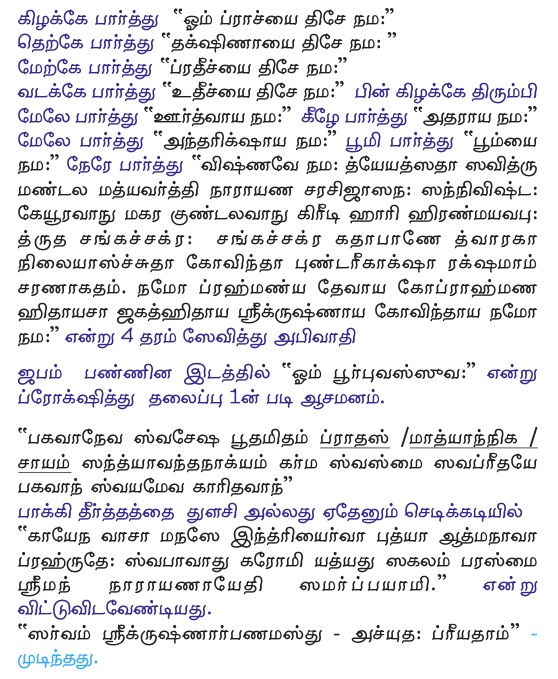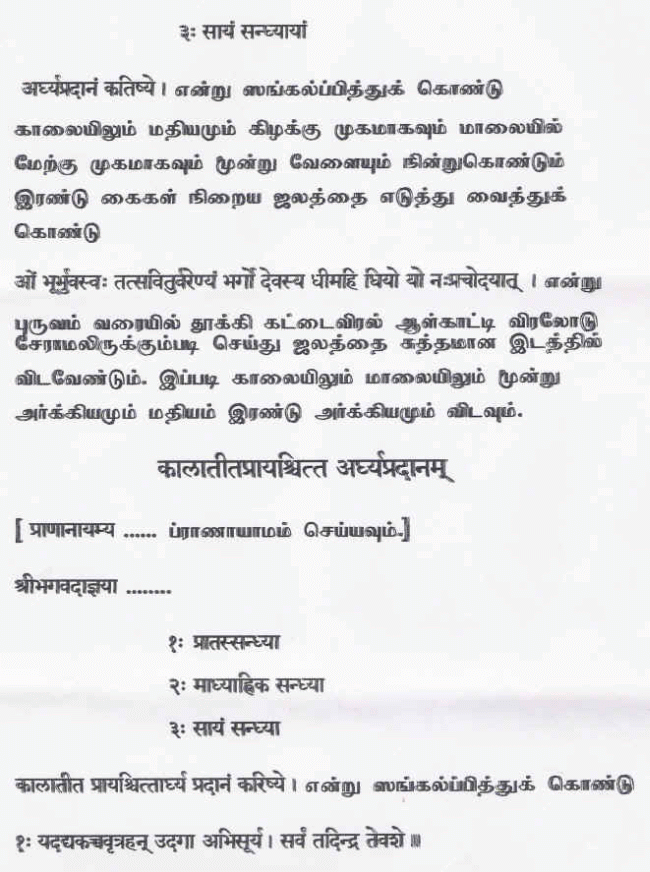
The image of this primary source is shown above. Paani Company, Thiruvallikkeni, Madras (1955). The primary source for this article is the book Yajussandhyaa Bhashyam by P.T. Meanwhile, please use the pdf file linked above. The text will be available in this section soon. The document is available here: Yajurveda_Kaalai_Sandhyaavandanam.pdf The mantram is simultaneously written in Sanskrit (original Vedic text), Tamil (my native language) and English (most commonly used). Only the morning (Kaalai) Sandhyaavandanam is specified. Please note that rituals may differ for the reader, and the document is to be used at the reader's discretion. Paani Company, Thiruvallikkeni, Madras (1955) (image shown to the left). Much of the ritual we perform is also found in the book Yajussandhyaa Bhashyam by P.T. My family follows the Yajurveda, and the following article documents the procedure taught to me by my grandfather M Viswanathan, and passed on to me by my father MV Subramanian. As a result the Sandhyaavandanam is a very diverse ritual, and will perhaps continue to evolve in scope and specific details of performance in the future. Furthermore, additional differences arise depending on the various communities, families and individuals that perform the Sandhyaavandanam.

It is considered a salutation to the Goddess Sandhyaa that presides during the Sandhyaa time, personified in various forms.ĭepending on which Veda is followed (Rig, Yajur, Sama, Atharva), the ritual differs in the mantram recitation and the procedures. The Sandhyaavandanam is performed three times in the day: just before sunrise, at high noon, just after sunset.


Sandhyaavandanam is a daily prayer ritual performed in preparation for conducting subsequent Vedic rituals.


 0 kommentar(er)
0 kommentar(er)
